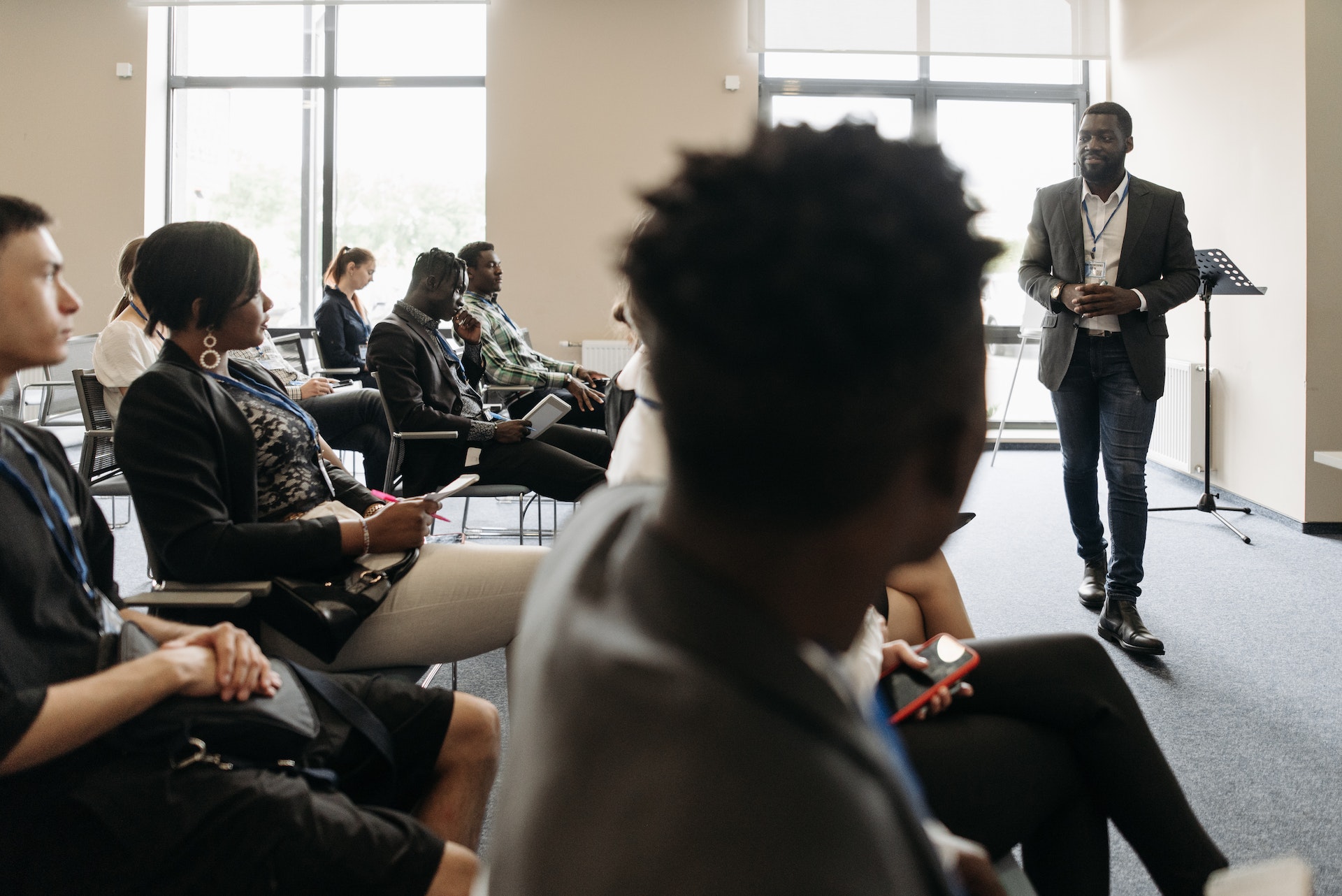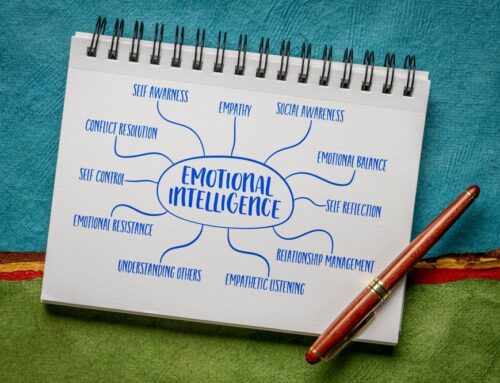
In today’s educational landscape, classroom conflict management and resolution are pivotal to creating a harmonious learning environment. As students from diverse backgrounds and with varying needs come together, it’s inevitable that conflict arises.
Teachers, the architects of classroom dynamics, face the challenge of navigating these disputes tactfully and efficiently. Effective classroom management involves addressing conflict promptly and constructively, turning potential disruptions into valuable learning opportunities.
AllWin Conflict Resolution Training recognizes the unique challenges teachers face in this regard and offers tailored solutions to empower educators. By equipping teachers with the right tools and strategies, students can learn the importance of understanding, communication, and cooperation in resolving classroom conflicts.
The Importance of Conflict Resolution in the Classroom for Fostering Positive Learning Environments
The capacity to effectively manage classroom conflict involves fostering a positive classroom environment conducive to student learning. When teachers adeptly navigate student conflict, they set the stage for a more engaging, respectful, and inclusive learning space.
Enhancing Learning and Development
At the heart of managing classroom conflict is the development of conflict resolution skills among students. These competencies are crucial for student success both inside and outside the classroom.
By observing and participating in conflict resolution, students acquire essential problem-solving skills, empathy, and the ability to listen and communicate effectively. Such skills are invaluable, laying a foundation for future personal and professional interactions.
Building a Supportive Classroom Community
Teachers play a pivotal role in managing conflict and preventing it through creating a supportive and understanding classroom culture. This involves implementing strategies that encourage students to express their opinions and feelings constructively, thus reducing student conflict.
In the context of college teaching, where the stakes are higher and the pressures greater, fostering such an environment is critical for student engagement and retention.
Types of Classroom Conflicts
Student vs. Student Disputes
One common form of conflict in educational settings involves disputes between students themselves. These can stem from various sources, such as disagreements over group projects, competition for resources, or personal misunderstandings.
Encouraging students to engage in open dialogue and understand each other’s perspectives is crucial in resolving these conflicts. Teachers can teach students effective communication techniques and encourage students to find common ground, fostering empathy and mutual respect.
Student vs. Teacher Challenges
Conflicts between students and teachers often arise from misunderstandings, perceived unfair treatment, or differences in expectations. In these scenarios, teachers must model conflict resolution by actively listening to students’ concerns and explaining their perspectives calmly and clearly.
Teaching students how to express their concerns respectfully and encouraging them to seek understanding helps to build trust and a more positive classroom environment.
Group Conflicts
Group conflicts in the classroom can emerge when collaborating on projects or during team-based activities. These conflicts can be due to differing work ethics, ideas, or personalities. Teachers can teach students the importance of compromise, role allocation, and effective team communication.
Through these experiences, students learn valuable life skills, such as problem-solving skills and managing diverse viewpoints. Focusing on student behavior within these dynamics allows teachers to guide students toward more harmonious group interactions, reinforcing the importance of cooperation in achieving common goals.

Strategies for Empowering Classroom Peace
When conflict in the classroom arises, teachers have a unique opportunity to model and teach students how to resolve conflicts peacefully.
Proactive Measures and Engagement
One of the most effective conflict resolution steps involves preemptive measures to minimize conflict in the classroom. Encouraging open communication through regular class discussions allows students to express concerns before they escalate.
For instance, a “conflict corner” where students can write down issues anonymously encourages them to voice their problems non-confrontationally. This method empowers students and fosters a sense of community and mutual respect.
Active Listening and Empathy Building
A cornerstone of resolving conflict effectively involves teaching students and teachers the power of active listening and empathy. When other students are engaged in a disagreement, instructing them to paraphrase what the other has said before responding can significantly reduce misunderstandings.
This practice emphasizes the importance of understanding body language and tone, which are often as telling as the words themselves.
Problem-Solving Together
Constructively resolving conflicts often requires a collective effort. A practical strategy is to involve students in conflict resolution using role-play scenarios. This hands-on approach allows students to experience both sides of a conflict, teaching them valuable perspectives and resolving conflicts through empathy and collaboration.
For example, in a student vs. teacher scenario, role reversal can help each party understand the other’s viewpoint, leading to more effective solutions.
Through these strategies, teachers can significantly enhance the classroom environment, making it a space where students feel safe to express themselves and resolve conflicts amicably. By empowering students to actively resolve conflict, educators lay the groundwork for a more cohesive and supportive learning experience.
Proactive Strategies for a Harmonious Classroom
While some degree of conflict is natural, teachers can do a lot to create a classroom environment where students feel heard and respected and less likely to get into disagreements.
Cultivating Empathy and Understanding
To prevent conflict and foster an effective learning environment, it’s crucial to cultivate empathy among students. Encourage them to consider each other’s perspectives and feelings before reacting.
For example, a teacher might use role-playing activities to help students understand their peers’ emotions and viewpoints, reducing potential conflict by promoting empathy.
Setting Clear Expectations
Establishing clear rules and expectations from the start can significantly mitigate conflict in the classroom. This involves laying out the consequences of classroom incivility and explaining the importance of respect and cooperation in creating a positive learning environment. Consistency in enforcing these rules in the same manner for all students is key to maintaining fairness and respect.
Encouraging Open Communication
Handling conflict effectively often boils down to how well individuals can communicate effectively. Teachers should model and teach students the art of expressing their thoughts and student’s feelings openly but respectfully. Implementing regular feedback sessions where students can voice concerns or suggestions can help address issues before they escalate into conflicts.
Promoting Collaborative Problem-Solving
To mitigate conflict and enhance the learning process, involve students in collaborative problem-solving activities. This approach not only helps in conflict management but also encourages students to work together toward a common goal—appreciating each other’s input and fostering a spirit of teamwork.
Recognizing and Valuing Differences
A key strategy in preventing classroom conflicts is acknowledging and valuing the diverse backgrounds and perspectives students bring to the classroom. Celebrating cultural days, sharing personal stories, and incorporating a variety of viewpoints in the curriculum can help students appreciate diversity and reduce misunderstandings that could lead to conflicts.
Communication, Empathy, and Listening in the Classroom
Effective communication lies at the heart of preventing and resolving classroom incivilities.
Communication
Effective communication is paramount in preventing and resolving classroom incivilities. When teachers encourage open dialogue, they create an atmosphere where students feel comfortable sharing their thoughts and concerns.
For instance, implementing a ‘thoughts and feelings’ box where students can anonymously submit their worries or conflicts encourages a culture of openness. This strategy ensures that students understand the importance of voicing concerns before they escalate into hurt feelings or misunderstandings, thereby maintaining an effective learning environment.
Empathy
Empathy allows students and teachers to perceive and understand each other’s emotions, fostering a supportive classroom atmosphere. Role-playing exercises, where students are asked to act out scenarios from their peers’ perspectives, can significantly enhance empathetic understanding.
Such activities help students grasp the impact of their actions and words, reducing classroom incivilities and promoting a more inclusive, effective learning environment.
Active Listening
Active listening means focusing intently, understanding the message, responding thoughtfully, and retaining the information. In problem-solving, teachers can model active listening by paraphrasing a student’s concerns during a conflict, showing they have truly heard and understood the issue.
This practice not only validates the student’s feelings but also encourages them to engage in the problem-solving process, leading to more effective resolutions. Workshops on active listening can equip most students with the skills to navigate disputes constructively, ensuring that all voices are heard and considered.

The Consequences of Unresolved Conflicts
Unresolved conflicts don’t just disrupt the classroom at the moment—they negatively impact student learning and well-being.
Diminished Academic Performance
Unresolved conflicts can lead to a stressed and distracted classroom environment where students struggle to focus on their studies. The tension distracts from the learning opportunity it presents, instead creating an atmosphere that hampers academic growth and understanding.
Eroded Trust and Relationships
Continuous conflict without resolution can erode the trust between teachers and students and among the students themselves. This relationship breakdown makes it difficult for the classroom to function as a cohesive unit, impacting the students’ sense of belonging and community.
Increased Anxiety and Stress
The stress associated with ongoing disputes can have a significant impact on students’ mental health, leading to increased anxiety and stress levels. This emotional turmoil can detract from a safe and supportive learning environment, which is essential for student well-being.
Loss of Interest in Learning
The hostile atmosphere generated by unresolved conflicts can lead to a loss of interest in learning among students. When students feel uncomfortable or unsafe in their classroom environment, their engagement and motivation to learn diminish significantly.
Steering Teachers Toward Conflict Mastery
Integrating conflict resolution and management training into teacher education programs can transform the educational landscape, equipping educators with the skills to navigate hot moments and foster a more harmonious learning environment.
Enhancing Self-Awareness and Control
One significant benefit is the development of self-control and awareness among teachers. Understanding their reactions and emotions in conflict situations enables educators to model constructive behavior, teaching students to handle their own problems with maturity and patience.
Clarifying Policies and Expectations
Conflict management training helps teachers establish clear expectations and fair policies, reducing ambiguity that often leads to disputes. This clarity helps reduce conflict by ensuring that all students understand what is expected of them academically and behaviorally.
Facilitating Constructive Dialogues
Armed with effective conflict resolution techniques, teachers can turn challenging situations into opportunities for dialogue and learning. Training provides strategies for de-escalating tense situations and exploring possible solutions, allowing teachers to guide students toward a new perspective on conflicts.
Empowering Problem-Solving Skills
Such training empowers teachers to resolve conflicts themselves and teach students how to approach their conflicts constructively. This approach fosters an environment where students learn to view conflicts as opportunities for problem-solving and personal growth rather than obstacles to their success.
Embrace the Journey Toward Conflict Mastery
Incorporating conflict resolution training into educational settings enriches the learning experience, nurtures empathy, and enhances problem-solving skills among students and teachers alike. Embrace these strategies to foster a positive, productive classroom environment. For more insights and support, contact us at AllWin Conflict Resolution Training.

About the Author: Jeremy Pollack
Jeremy Pollack, Ph.D. is the founder of Defuse De-Escalation Training, a sister company of Pollack Peacebuilding Systems, the largest workplace conflict resolution training and consulting firm in North America. He actively participates in de-escalation training and consulting initiatives for a variety of industries, from Fortune 500 companies to well-known non-profits. Besides his Ph.D. in Psychology from Grand Canyon University, Jeremy holds a Master’s Degree in Negotiation, Conflict Resolution, and Peacebuilding (NCRP) from California State University, Dominguez Hills. He is also a member of several organizations focused on conflict resolution and peacebuilding, such as the Peaceful Leadership Institute, the Association for Conflict Resolution, and the Division 48 (Division of Peace Psychology) of the American Psychological Association. Jeremy also holds several certifications in the field of training and coaching: he is a Certified Organizational Development Coach (CODC™), a Certified Clinical Trauma Specialist-Individual (CCTS-I™), and an Associate Certified Coach (ACC) under the International Coaching Federation.









